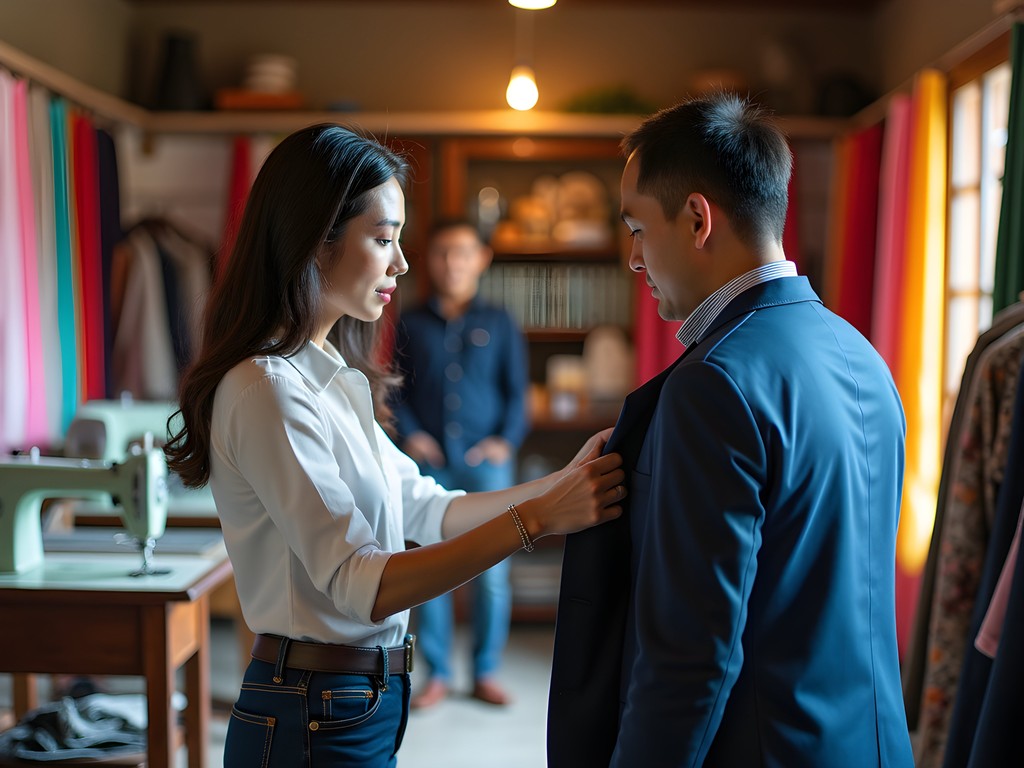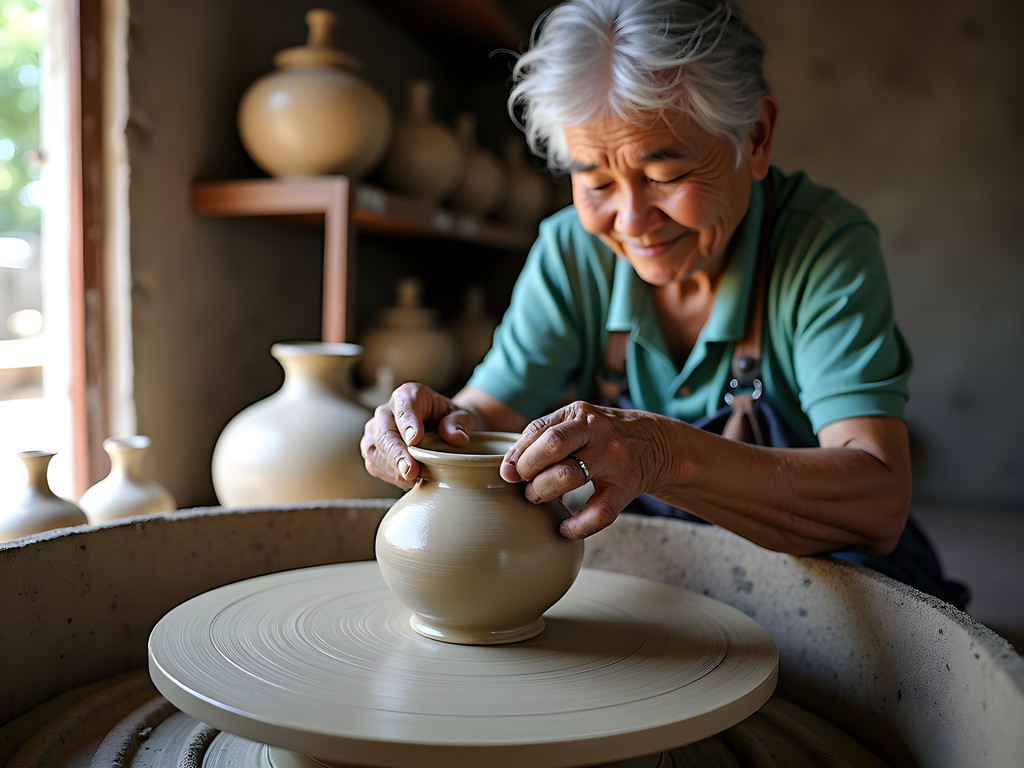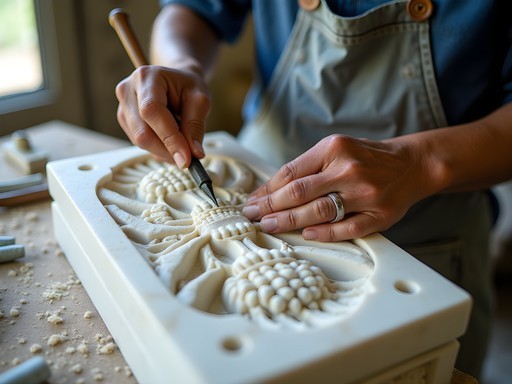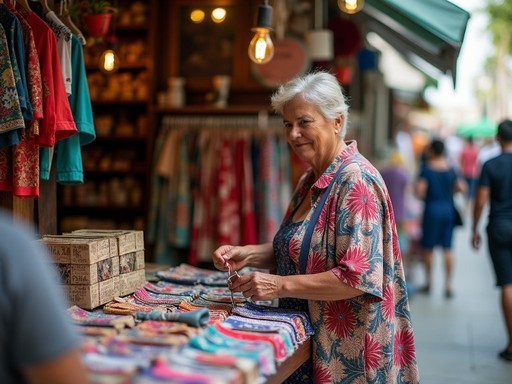Disclosure: This article contains affiliate links. We may earn a commission from purchases at no extra cost to you, which helps our travel content.
There's something about marketplaces that reveals a culture's true heart. As someone who's spent 15 years scanning faces and reading body language for the U.S. Border Patrol, I've developed a sixth sense for authenticity – a skill that serves me surprisingly well when hunting for genuine craftsmanship in Vietnam's central coast. My Māori ancestors were master craftspeople, which might explain why I'm drawn to places where traditional skills remain alive. The 30km stretch between Da Nang's urban energy and Hoi An's lantern-lit charm offers one of Southeast Asia's most rewarding shopping experiences. Whether you're hunting for handmade ceramics, custom tailoring, or food souvenirs that will transport you back with a single taste, this region delivers exceptional value without the aggressive haggling that plagues other Asian destinations. Kia ora, fellow travelers – let me guide you through a week of treasure hunting where your shopping dollars directly support local artisans.
Da Nang Markets: Urban Treasures Worth Exploring
Da Nang might be Vietnam's third-largest city, but its markets retain a distinctly local feel that I find refreshingly authentic. My security background has me naturally scanning for exits and potential issues, but here I can actually relax – Da Nang's markets are noticeably less pushy than those in Hanoi or Ho Chi Minh City.
Con Market (Chợ Cồn) stands as the city's largest traditional market, a three-story labyrinth where I spent an entire morning getting wonderfully lost. The ground floor houses fresh produce and food stalls where locals actually shop (always a good sign), while the upper levels offer clothing, housewares, and souvenirs. What impressed me was finding entire sections dedicated to specific crafts – from textile vendors with stunning hand-embroidered tablecloths to artisans selling intricate paper crafts.
Han Market (Chợ Hàn) sits closer to the riverfront and caters slightly more to tourists, but still maintains its local character. The dried food section makes for excellent food souvenirs – I brought back bags of dried tropical fruits and locally-grown coffee beans that had my colleagues back at the Border Patrol office fighting over them for weeks.
For night owls, Helio Night Market transforms an ordinary shopping center into a vibrant night bazaar with street food, performances, and vendors selling everything from handmade jewelry to trendy clothing. The controlled environment makes it perfect for shopping novices who might find traditional markets overwhelming.

💡 Pro Tips
- Visit Con Market before 9am to see locals doing their daily shopping and avoid tourist crowds
- Bring a packable daypack that folds into itself for unexpected purchases
- For electronics or modern items, Non Nước Shopping Center offers fixed prices (no haggling needed) and legitimate warranties
Non Nước Stone Village: Where Mountains Become Art
Halfway between Da Nang and Hoi An sits one of Vietnam's most unique craft villages, and it's one that resonated deeply with my Māori heritage. The Māori have a profound connection to stone carving, and watching Vietnamese artisans transform marble from the nearby Marble Mountains into everything from tiny Buddha figurines to massive temple guardians felt strangely familiar despite being halfway around the world.
Non Nước Stone Village (Làng đá mỹ nghệ Non Nước) stretches along the road at the foot of the Marble Mountains. What began centuries ago as a village of craftspeople making stone mortars and pestles has evolved into a thriving community of sculptors whose works are exported globally.
The workshops operate with open fronts, allowing visitors to witness the entire process – from rough cutting with power tools to the delicate hand-finishing that brings the stone to life. The sound of chisels tapping against marble creates a rhythmic backdrop as you explore.
While many shops sell similar items, I discovered that venturing deeper into the village reveals more specialized artisans. One elderly craftsman, his hands weathered by decades of stonework, created miniature animals with such lifelike details that I couldn't resist bringing home a small elephant for my daughter.
Shipping larger items home is surprisingly affordable. After selecting a 30cm Buddha statue, the shop arranged international shipping with impressive efficiency – the statue arrived at my Arlington home just two weeks later, perfectly packaged and intact. If you're considering a substantial purchase, I'd recommend bringing a digital luggage scale to weigh smaller items and determine whether to carry them or ship them.

💡 Pro Tips
- Visit workshops early in the day to see artisans at work before the tour buses arrive
- For unique pieces, look for shops displaying artist certificates or awards
- Negotiate shipping costs separately from the item price – they're often flexible on shipping fees
Hoi An Ancient Town: Tailor-Made Memories
If Da Nang offers variety, Hoi An delivers refinement. This UNESCO World Heritage Site has preserved its merchant history not just in its architecture but in its thriving artisan culture. As someone who typically packs light and practical (old habits from my Border Patrol days die hard), I never expected to become an advocate for custom clothing – yet here we are.
Hoi An's famous tailoring industry offers an experience that goes beyond shopping. With over 400 tailor shops in this small town, finding the right one can feel overwhelming. After multiple visits, I've learned to look beyond the tourist-facing shops on Tran Hung Dao Street to find family-run establishments where three generations might work together on your garments.
BeBe Tailor and Yaly Couture have earned their reputations for quality and service, but I found my personal favorite in a smaller shop called A Dong Silk, where the owner sketched design modifications for my sports jacket while sharing stories of learning tailoring from her grandmother. Within 48 hours, I had a perfectly fitted jacket that would have cost five times as much back home.
Beyond clothing, Hoi An excels in leather goods (look for Friendly Shoe Shop for custom footwear), lanterns (best along Nguyen Hoang Street), and food products. The central market sells exceptional spices, teas, and Vietnamese coffee beans at better prices than you'll find in Da Nang.
For photography enthusiasts, Hoi An's picturesque streets deserve proper documentation. I've found my travel tripod invaluable for capturing the magical lantern-lit evenings without blur – just be respectful of pedestrian traffic when setting up.

💡 Pro Tips
- Allow at least two days for tailoring with time for fittings – rushing custom work defeats the purpose
- Bring a favorite garment as a reference model – tailors can replicate and improve upon existing pieces
- Morning visits (8-10am) to tailor shops typically mean more attentive service before the crowds arrive
Thanh Hà Pottery Village: Getting Your Hands Dirty
Four kilometers west of Hoi An lies a 500-year-old community where Vietnam's ceramic traditions remain vibrantly alive. Thanh Hà Pottery Village offers something increasingly rare in our digital age – the chance to witness an ancient craft practiced exactly as it has been for centuries.
The village's location along the Thu Bon River is no accident – the riverbanks provide the clay that has sustained generations of potters. While many traditional craft villages throughout Asia have become purely tourist attractions, Thanh Hà maintains its authenticity because it still produces functional pottery for Vietnamese households alongside visitor-friendly souvenirs.
What makes this village special is the interactive opportunity. For a small fee (around 50,000 VND), workshops let visitors try their hand at the pottery wheel under the patient guidance of artisans. My first attempt at creating a simple bowl provided plenty of laughs for the elderly potter supervising me – a humbling reminder that true skill takes a lifetime to develop.
Beyond the hands-on experience, the village's narrow lanes reveal workshops specializing in different ceramic styles. I was particularly drawn to a family creating miniature ceramic houses with remarkable architectural details. These pieces were significantly more affordable than similar items I'd seen in Hoi An's boutiques.
To capture the experience properly, consider bringing a lens cleaning kit – the combination of dust and humidity can leave camera lenses struggling in these workshops. I learned this lesson the hard way when my favorite shots from my first visit came out disappointingly foggy.

💡 Pro Tips
- Visit in the morning when potters are preparing clay and beginning new pieces
- Wear clothes you don't mind getting dirty if you plan to try the pottery wheel
- Look for the ceramic whistle-toys – inexpensive, packable souvenirs that children love
Haggling with Heart: A Border Agent's Negotiation Guide
My years with the Border Patrol taught me to read people quickly – a skill that serves me surprisingly well when negotiating in Vietnamese markets. Unlike some destinations where haggling feels like combat, the Da Nang to Hoi An corridor offers a gentler approach that respects both buyer and seller.
First, understand the context: fixed-price shopping (department stores, branded shops) versus flexible pricing (markets, independent artisans). In traditional markets like Con Market or Hoi An's Central Market, prices are absolutely negotiable, often starting at 2-3 times the actual value. In artisan villages like Non Nước or Thanh Hà, there's still room for negotiation, but the margins are smaller because you're closer to the maker.
My Māori upbringing emphasized the concept of utu – maintaining balance and reciprocity in exchanges. This philosophy has shaped my approach to haggling. Rather than trying to secure the absolute lowest price, I aim for what Kiwis call a "fair go" – a price that respects both the craftsperson's skill and my budget.
Start by establishing rapport. A simple "Xin chào" (hello) and a smile creates a human connection before discussing money. Ask questions about how items are made or where materials come from – genuine interest often leads to better prices than aggressive bargaining tactics.
When naming your first counter-offer, I typically suggest 40-50% of the initial asking price. This gives room to meet in the middle without insulting the seller. Walk away politely if the price doesn't reach a level you're comfortable with – you'll often be called back with a better offer.
For large purchases, I've found having local currency essential. While many shops accept credit cards, carrying a money belt with sufficient Vietnamese dong not only helps you avoid foreign transaction fees but often secures better prices, as sellers don't have to factor in card processing costs.

💡 Pro Tips
- Learn the Vietnamese numbers to understand prices when sellers use calculators to communicate
- Shop around before purchasing – identical items can vary dramatically in price between stalls
- Save your serious haggling for meaningful purchases – spending 10 minutes to save 50 cents on a small souvenir creates unnecessary tension
Final Thoughts
As I packed my treasures for the journey home – a custom-tailored linen shirt, a small marble elephant, pottery whistle-toys for my daughter, and packets of aromatic spices – I reflected on how this stretch of Vietnamese coastline offers more than just shopping opportunities. It provides windows into traditions that have sustained communities for centuries. The value isn't just in the items you'll bring home but in the connections you'll make with the people who create them. My Māori ancestors understood that objects carry the mana (spiritual power) of their makers. When you purchase directly from artisans in Da Nang and Hoi An, you're bringing home pieces with soul and story. Whether you're an experienced market navigator or a first-time visitor to Southeast Asia, this region offers an accessible entry point to ethical, meaningful shopping that supports traditional craftsmanship. Kia kaha (stay strong) in your treasure hunting – and remember that the best souvenirs are the ones that carry memories of the hands that created them.
✨ Key Takeaways
- Allocate at least 2-3 days in Hoi An for custom tailoring with time for multiple fittings
- Visit craft villages in the morning to see production in progress before tour groups arrive
- Learn basic Vietnamese numbers to understand prices and show respect during negotiations
- Support traditional crafts by purchasing directly from artisans rather than resellers whenever possible
📋 Practical Information
Best Time to Visit
February-May and September-November for dry, moderate weather
Budget Estimate
$30-50 per day plus shopping budget
Recommended Duration
5-7 days
Difficulty Level
Easy
















Comments
redseeker
How many days would you recommend for shopping in Hoi An if I want custom clothes? Is 3 days enough for multiple fittings?
freewalker
3 days is tight but doable if you visit the tailor immediately upon arrival. Most places can do 2 fittings in that timeframe. I'd recommend 4-5 days to be comfortable though!
Amit Sullivan
What a delightful guide! Having spent considerable time in Vietnam over the decades, I've witnessed how these artisan communities have evolved while maintaining their traditions. In Thanh Hà, I befriended a family of potters who've been practicing for seven generations. They showed me clay preparation techniques unchanged for centuries! One practical tip for serious shoppers: I bring a collapsible duffle specifically for these trips, as you'll inevitably accumulate treasures. Taylor's observation about marketplaces revealing cultural hearts couldn't be more accurate - it's where commerce and heritage intertwine most authentically.
wavelegend
Those whistle-toys are adorable! My kids still play with theirs years later. Great photos too!
sunnypro1283
Did you find the pottery village easy to get to from Hoi An? Thinking about visiting but worried about transportation options.
Taylor Hunter
It's actually really accessible! You can take a quick taxi (about 10 mins) or rent a bicycle and enjoy a scenic 15-20 minute ride. The village welcomes visitors and many workshops offer demonstrations. Definitely worth the trip!
sunnypro1283
Perfect, thanks! Adding it to my itinerary now.
Jose McDonald
Taylor, your Border Patrol background gives such a unique perspective on these markets! I spent three weeks exploring the same areas last year and was completely mesmerized by Non Nước Stone Village. The craftsmanship is INSANE - watched a guy carve an intricate dragon from marble in what seemed like minutes. Ended up buying way too many pieces and had to ship them home separately. Pro tip for anyone heading there: bring cash and don't be afraid to negotiate, but remember these artisans deserve fair compensation for their incredible skills!
freewalker
Those custom tailored clothes from Hoi An are seriously the best souvenirs I've ever bought. Still wearing mine 3 years later!
redseeker
Which tailor did you use? Going next month and can't decide!
freewalker
I went with Yaly Couture - bit pricier but the quality was worth it. Get multiple fittings if you can!
SunnyDaysTravels
Those stone carvings in your photos are incredible! Did you ship any larger pieces home?
Taylor Hunter
Thank you! I stuck with smaller pieces I could pack in my suitcase this time. But the larger workshops in Non Nước do offer international shipping - several tourists were arranging for beautiful garden sculptures to be sent home!
Fatima Sims
Taylor, your Border Patrol background gives you such a unique perspective on these markets! I've visited the Non Nước Stone Village three times now and I'm always amazed at how the artisans transform marble into such delicate pieces. For anyone planning a visit, I'd recommend going early morning (7-8am) when it's cooler and you can watch the craftspeople starting their day. Also, if you're serious about buying larger pieces, many shops can arrange shipping - I sent a beautiful 30kg Buddha statue home using travel insurance to cover it during transit. The Han Market in Da Nang is also worth an extra mention for food souvenirs - the dried fruit and local coffee beans make perfect gifts!
Taylor Hunter
Great tip about the early morning visits, Fatima! And yes, the shipping options are surprisingly reliable. I should've mentioned the coffee beans - that aroma in Han Market is unforgettable!
springblogger
Going there next month! How's the bargaining etiquette? I never know how much to haggle without being disrespectful.
Fatima Sims
Start around 40-50% of initial price and work up from there. Always with a smile! Most expect it, but for artisan pieces where you see them actually making it, maybe just a gentle 10-20% negotiation. Have fun!
springfan
Just got back from Hoi An last month and the tailoring experience was the highlight of our trip! We had 3 suits and 2 dresses made at Yaly Couture - a bit pricier than some shops but the quality was amazing. Pro tip: bring photos of exactly what you want and allow at least 3 days for fittings. The pottery village was also incredible - my kids still play with the whistles they bought there almost daily!
Fatima Sims
Yaly is fantastic! I had a gorgeous silk dress made there in 2023. Did you try the cooking classes in Hoi An too? Perfect complement to the shopping experience.
springfan
We didn't do cooking classes - ran out of time! Definitely on the list for next visit though.
FirstTimeAsia
Love this! Going to Vietnam next month. Is it better to pay in USD or local currency at these markets?
Sarah Powell
Always better to pay in Vietnamese dong! You'll get better rates, and many smaller vendors don't even accept USD anymore. ATMs are plentiful in both cities.
Venture X
Premium card with 2X miles, $300 travel credit, Priority Pass